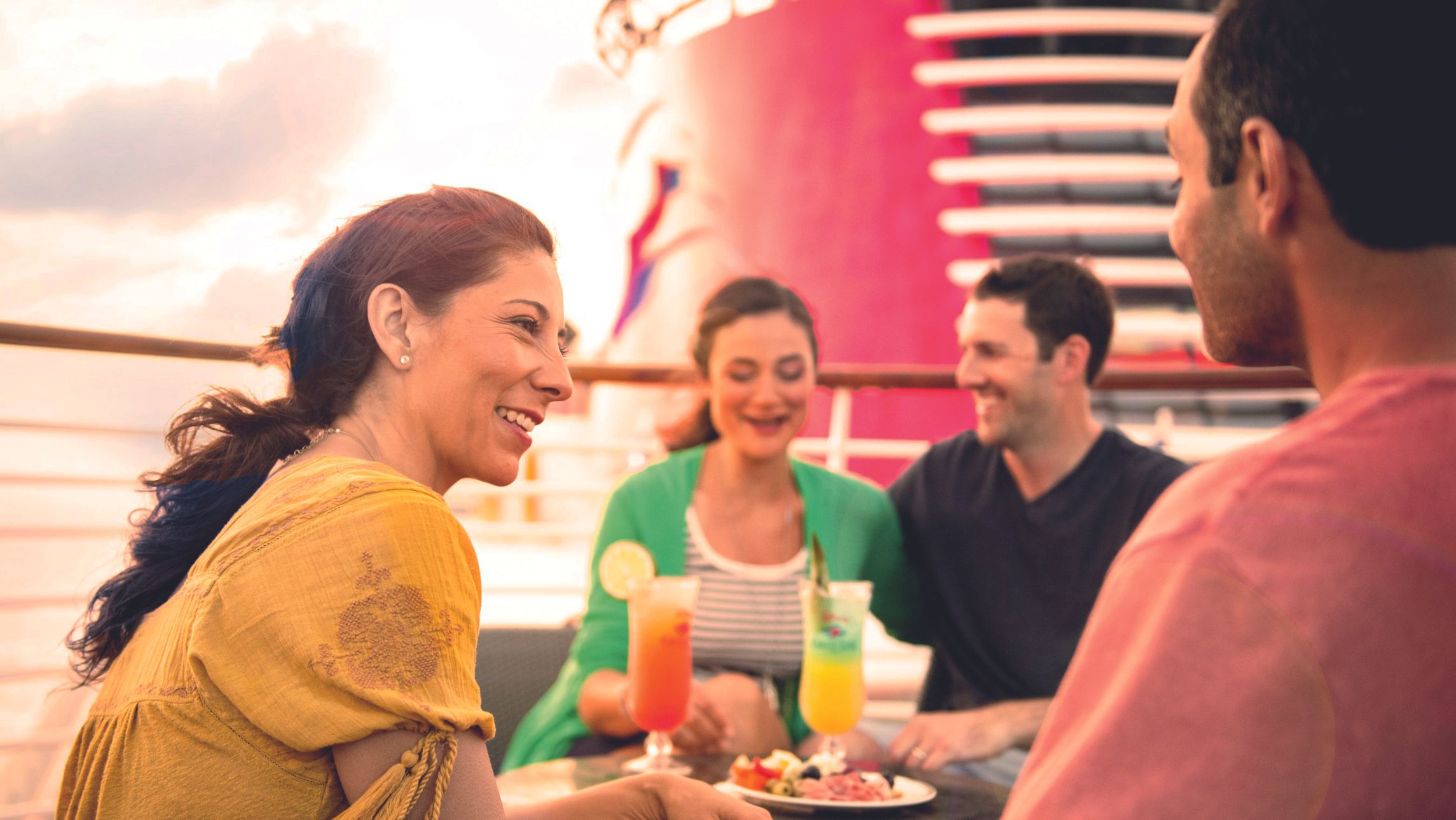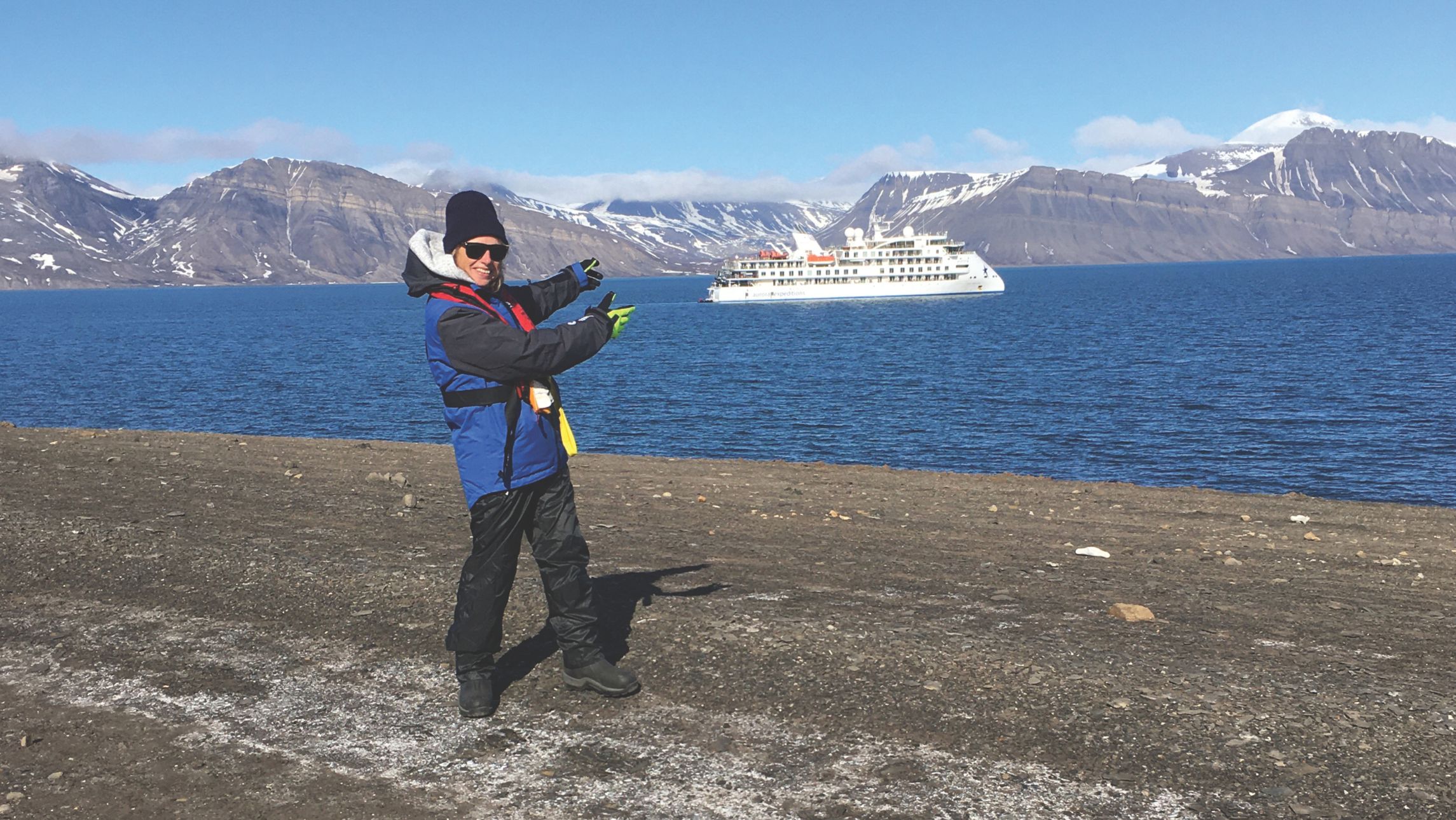“A luxury charter on a classic schooner proves a fitting way to explore Indonesia’s far-flung but historically rich Banda archipelago.”
It’s just before dawn, a very reasonable time to wake for any sailing crew. On the horizon, the towering volcanic peak of Gunung Api, the Fire Mountain, emerges from the haze, silhouetted against the rising sun as a dark and defiant shadow.
Above, the sky changes from the deep blues of night into the red and peach plumes of a spectacular sunrise, rays of golden sunshine penetrating a thick layer of morning mist crowning the peak. The seas below are mirror calm, treacle in their consistency, as pods of bottlenose dolphins arrive to guide our vessel, the 96ft schooner Mutiara Laut, towards the tiny port of Banda Neira.
You’d be forgiven for having never heard of the Banda chain, a tiny cluster of jade-hued peaks hidden away among the 17,000 islands of the Indonesian archipelago. However, their history is one that reaches across the globe, into every history book, museum and kitchen, for these are the historic Spice Islands – the origin of mace and nutmeg, spices once worth literally their weight in gold.
The islands’ isolation belies the impact they once had on world trade. It was the Banda Islands that prompted Columbus to set sail on his fateful journeys that ended with the discovery of the New World. Vasco da Gama rounded the Cape of Good Hope in their pursuit, while Ferdinand Magellan launched his circumnavigation of the globe secretly in search of their coveted spices.
The Mutiara Laut is a fitting way to arrive at such a remote yet historic destination. Based on an 18th-century North Atlantic schooner, the beautiful charter yacht is a picture of gleaming wood, towering masts and polished brass.
Itinerary
Designed by former ship’s captain, yacht racer and Dutch naval architect Leo van Oostenbrugge, the schooner was constructed of ironwood in Indonesia, where Leo had attempted retirement. Catering to a total of 14 guests in five beautifully appointed cabins, the yacht now offers a luxurious way to cruise the many remote islands of the Indonesian archipelago, from Komodo, Bali and Flores to Ambon, Sulawesi and Banda, and as far east as Papua’s stunning Raja Ampat.
We stand, steaming Sumatran coffee in hand, at the bow, enjoying the early morning sun on our faces after the inky darkness of night at sea, and watch as the Indonesian crew prepare for our arrival at Banda Neira. Slipping between the volcano – lava fields running down its flanks like wicked black scars – and the curling hook of the main island, the turrets of an ancient castle become visible on a hill above the sleepy port.
After breakfast, one of two tenders is lowered from the rear deck and my fellow passengers and I make our way to the port, the only real settlement in the island chain, clambering onto a crumbling pier beside a once grand hotel, its colonial architecture and pastel façade now faded and cracked in the early morning heat.
A dive operator, making the most of the region’s spectacular dive sites, now occupies the dusty hotel lobby. There is talk of a restoration, of golden years to come, but no one is holding their breath. Despite their vital role in history, the Banda Islands remain among the most secluded of the world’s faraway places, and foreign visitor numbers are low.
The first thing you notice walking through Banda Neira is how distinctly European the town looks, despite its crowing chickens, gleaming white mosque and bustling street markets. Colonial era homes in turquoise and pink and baby blue line the narrow lanes that run from the water’s edge towards the fort; some are now guest houses, their interior courtyards filled with overgrown gardens, goldfish ponds and complacent cats.
One house, painted cream with blue accents, has become a museum. Ancient cannonballs, muskets and jewellery boxes lie under glass and the often brutal history of the colonial era is remembered in brightly coloured tapestries on the wall. The museum’s pint-sized curator holds up a handful of coins dating from when Holland’s brutal Vereenigde Oostindische Compagnie (VOC),also known as the Dutch East Indies Company, assumed power over the Spice Islands. Despite being more than 400 years old, they gleam in the morning sun streaming in through louvered windows.
The Bandanese were no stranger to foreigners when the Dutch arrived in the 1500s. They had sold cinnamon, cloves, nutmeg and mace to Chinese and Arab traders for centuries, and later to the Spanish, British and Portuguese who travelled to the Banda Islands from their colony in Malacca. But island elders never allowed the Portuguese to build a fortification on Banda Neira, which essentially made the island easy picking for the more militant Dutch. They promptly built Fort Belgica in 1611 above the town, forcing the rival English forces to leave neighbouring islands and dominating the spice trade.
School is out and we’re followed by a slightly unruly band of curious children who practise their limited English (some even speak a smattering of Dutch to Leo, who booms with laughter in response) as they run past us giggling, only to wait in the next doorway for us to pass in turn. In the distance their older sisters walk down the narrow lanes, the sun brilliant on their white hijabs.
We walk away from the water again, passing tiny guest houses that display shelves of history books and ships in glass bottles, laid regally beside snorkelling gear for rent and brochures about the region’s stellar diving.
I’m watched as I ascend the stone stairs to Fort Belgica; the wet brown eyes of a doe-eyed calf never leaving me as I walk up an honour guard of brilliant red shrubs and shin-high emerald-hued grass. Even after all this time the walls of the fort are formidable; built in 1611 by the first Governor-General of the Dutch West Indies, as the Dutch promptly renamed the region, it was rebuilt in 1673 in its present pentagonal shape. Five tall circular towers keeping a watchful eye on the neighbouring islands.
As I leave entrepreneurial locals tempt me with their trade; VOC coins dug up from flower gardens; hefty cannonballs the colour of root beer; and, packed in plastic bags ready for the long trip home, cinnamon sticks, toffee-coloured nutmeg pods and the bright red mace that once clung to them, as so many powerful navies once clung to the tiny spice islands of Banda.
Accommodation
Life on board the Mutiara Laut is as idyllic as you might imagine on a sailing super-yacht. My VIP cabin at the stern of the vessel is spacious and simple, yet elegant. Decked out from head to toe in gleaming timber, there is plenty of storage space in the walk-in wardrobe, an ample work space and plenty of natural light.
Special attention has been given to each cabin’s bathroom, which in the case of the VIP suite runs the full width of the cabin, and includes double vanities, branded amenities and an open-plan shower decorated with intricate handcrafted tiles.
Dining
The ship’s private chef, a fluent Bahasa-speaking Belgian, cooks up a storm throughout the day; we enjoyed lazy breakfasts laced with fresh fruit and sunny-side eggs, and authentic Indonesian dishes at lunch and dinner, many made with ingredients sourced during excursions to villages.
When we are not fishing, snorkelling or exploring, it’s impossible not to curl up with a book on the shaded aft deck or laze in the sun on the foresail sun loungers with a cold beer.
As our cruise was part of the seasonal transit from east to west, we spent most of it in and around Banda Neira before cruising the length of Komodo to the busy port of Labuan Bajo, which serves the islands of Komodo and Flores.
Labuan Bajo is not only home to the main airport of the region, linking travellers with Bali, but is also home to stunning snorkelling, protected coves and colourful islands populated with sea gypsy families. Mutiara Laut’s crew take passengers to enjoy the extraordinary beauty of this national marine park, and to explore the welcoming sea gypsy villages during their season sailing between Bali and the islands of Komodo, Flores and Sumba.
Back on board we watch the SeaDream II navigate her way into the port, a tiny ship in cruising terms but the biggest thing to berth in Banda Neira for weeks. It’s a sign of times to come; the foreign navies might have left but the allure of the remote Banda Islands is now appealing to a new generation of intrepid travellers.








